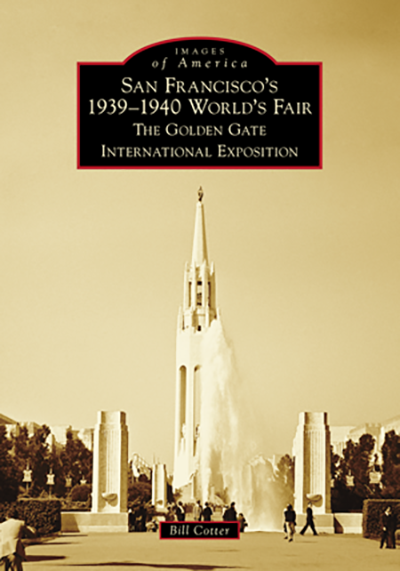When fans of World’s Fairs think about 1939, they typically look at the iconic New York World’s Fair in Queens. However, that wasn’t the only exposition that happened during that year. On the west coast, the Golden Gate International Exposition (GGIE) also charmed guests at the same time. This San Francisco event is the focus of the latest book from Bill Cotter. He’s an expert on World’s Fairs and brings that knowledge to explore this largely unknown piece of history.
This entry in the Images of America series includes the expected collection of vintage photos. What lifts this title beyond the typical one is the background from Cotter about the attractions. He visited the 1964-1965 World’s Fair in New York as a child and also worked for Disney. That fandom for World’s Fairs is evident throughout this book. The GGIE wasn’t as large as the New York event but still had plenty to offer. While it didn’t match expectations, it still drew nearly 10.5 million guests in 1939.
Creating Treasure Island
The GGIE took place on the 403-acre Treasure Island, which was actually built with 260 tons of rock and 20 million cubic yards of sand. It’s crazy to think about the work involved beginning in 1936 for this project. The $1.3 million budget for horticulture alone would translate to more than $27 million today. The island had transformed into a completely difference place by the time it opened on February 18, 1939. President Franklin D. Roosevelt even addressed the crowd by radio on the first day. This was hardly a small endeavor and promised to draw huge crowds to the island.
I’m impressed by how many great photos Cotter has assembled for this book. It also contains interesting background along with each picture. The massive Portals of the Pacific towers stood 120 feet tall and welcomed guests arriving on the ferry. Even more striking was the 400-foot Tower of the Sun, which stood near the center of Treasure Island. The GGIE also included towering statues like Ralph Stackpole’s Pacifica that could be seen far away. A few of the ornate pieces still exist. Floral displays like the Treasure Garden also look like they’ve been in place for decades.
Looming over this event was the war in Europe, which the United States would ultimately join. The GGIE even included the first B-17 bomber, known as the YB-17 experimental bomber at the time. The public also had more interest in Navy and Coast Guard exhibits due to the conflict. The Navy purchased Treasure Island in early 1941 and named it Naval Station Treasure Island. It functioned as a training facility and included a large military hospital. It was quite a change from the GGIE festivities.
Spotlighting a Forgotten World’s Fair
This San Francisco’s 1939-1940 World’s Fair book included far too many gems to note here. The chapter on the condensed 1940 version shows the interesting changes needed to keep the GGIE afloat. Pavilions were repurposed for other countries like having Denmark replace Australia. The French pavilion also became the home of the Treasure Island Ice Frolics show. There’s even a fun anecdote of presidential candidate Wendell Willkie stopping at the fair for an embarrassing moment.
The GGIE has a Disney connection with their first animated commercial in a long time for the Nabisco exhibit. This premiere of this Mickey’s Surprise Party short happened at this event prior to its New York World’s Fair appearance. It’s cool to check out the amusement park sections, including the twin Ferris wheels and early thrill rides like the Roll-O-Plane and Flying Scooter. Cotter does an excellent job summing up this forgotten event in this engaging and informative book.
Purchase a copy of San Francisco’s 1939-1940 World’s Fair: The Golden Gate International Exposition from Amazon in the paperback, hardcover, or Kindle version.
Related Book Reviews: Bill Cotter
Claude Coats: Walt Disney’s Imagineer by Dave Bossert
Tomorrow-land: The 1964-65 World’s Fair and the Transformation of America by Joseph Tirella
At the Corner of Fantasy and Main: Disneyland, Midlife, and Churros by Matt Mason
From Horizons to Space Mountain by George McGinnis
Disney Theme Parks and America’s National Narratives by Bethanee Bemis
This post contains affiliate links. Making any purchase through those links supports this site. See full disclosure.




Leave a Reply